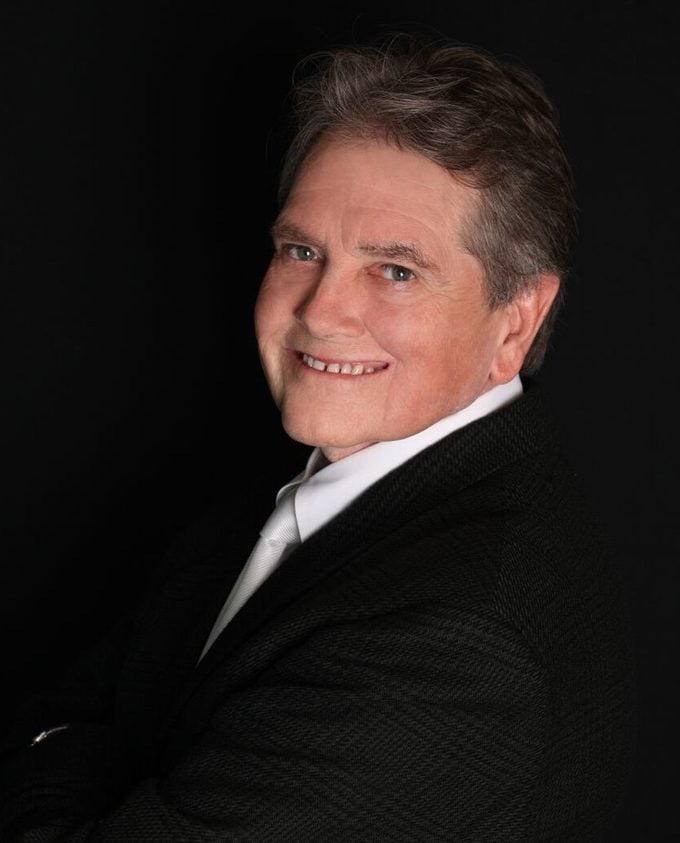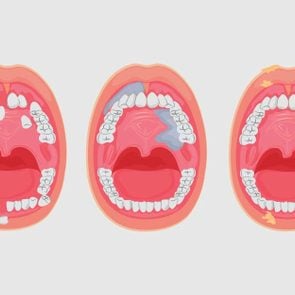This Man Was Dying of Cancer—Till a New Test Showed Doctors Exactly How to Treat It
Updated: Jun. 30, 2022
Keith Taggart never dreamed the tiny lump in his cheek was terminal cancer. Five years ago he was given three weeks to live, and now he's on a mission to share what saved his life.

That pea-sized lump on Keith Taggart’s cheek wasn’t pretty to look at, although Taggart wasn’t too worried about it. Neither was his primary care doctor, who sent the 62-year-old Taggart to an oral surgeon to be on the safe side. Just to be safe, the oral surgeon decided to biopsy the lump. It was cancer.
“It was salivary gland cancer,” Taggart recalls. This type is extremely rare, making up less than 1 percent of all cancer cases, according to the American Cancer Society. It often turns up as a small painless lump in the jaw and cheek, or as muscle pain or numbness in the face. (Those are just some of the signs of oral cancer you shouldn’t ignore.)
The tiny tumor located in the muscle of Taggart’s cheek wasn’t painful, but it was spreading. Taggart had surgery to remove the bump, and then he went to a local cancer center to have another surgery that took even more tissue from the area. After that, Taggart underwent seven weeks of radiation.
Getting more advanced care
But new growths kept showing up, says Taggart. “By the time I would heal from surgery, new tumors would show up. I’d heal and then reschedule my next surgery to have them removed.” His surgeons were flummoxed by the aggressiveness of the cancer. Taggart knew he needed to get to an advanced facility.
“I transferred my care to MD Anderson in Houston, Texas. That was when the tumors began moving down my neck, to my shoulders and chest. It was surgery after surgery, and they were removing more tumors at a time.” After enduring another seven weeks of radiation and yet another chest surgery to remove cancerous lymph nodes, his oncologist leveled with him. “My surgeon told me, ‘This is so aggressive, we can’t keep doing surgery. We simply cannot keep up with your tumors.’ They ordered a full body scan to see where else it was. When the scan came back, it showed I was eaten up with cancer.” Taggart’s cancer had spread to his lungs, liver, and kidneys.
Taggart’s situation had gone from bad to terminal. “I went to another chemo doctor at MD Anderson and she said chemotherapy would buy me another three to four weeks. It had spread to my vital organs.”
A clinical trial
Stunned by the news, Taggart went home and began thinking about getting his affairs in order. Suddenly, his phone rang: On the line was a researcher who was recruiting for a clinical trial of a new drug. Taggart’s biopsies had revealed that his cancer had a rare genomic pattern called an NTRK gene fusion. The drug under study had been developed to target this particular type of fusion.
The decision was easy for Taggart. “Of course I said ‘yes,’ I had no other options.” He started the new medication—a twice-daily pill—and it began to work almost immediately. “After four days I could no longer feel the tumors in my face and neck,” he says. After four weeks all his tumors were gone except for one in his lung, and that one had shrunk by 65 percent. “At my scan last month, the report said even that one is gone. I’m thrilled.” Since beginning the medication no new tumors have appeared, and Taggart says he will remain on the life-saving treatment for the foreseeable future, and his doctors will continue to scan him in case the tumors come back.
A new drug makes all the difference
“The day I began the drug was the day I had been scheduled for chemotherapy. That was five years ago, and I never had to go on chemo,” he says. Today, Taggart is passionate about educating others about the importance of genomic testing. “It’s extremely important for people with cancer to be aware and open to this testing. Doctors can’t treat you effectively if they don’t know what you have.” Taggart went through a site called testyourcancer.com to learn about genomic screens for various cancers, but he stresses that patients can always start the genomic-testing conversation with their medical team. “I’m on a mission to get the word out.” Next: These are other cancer symptoms you should never ignore.















